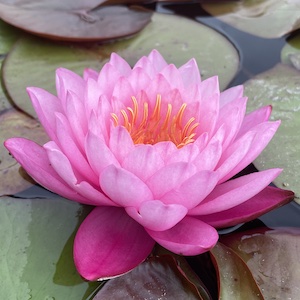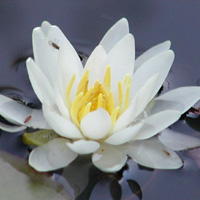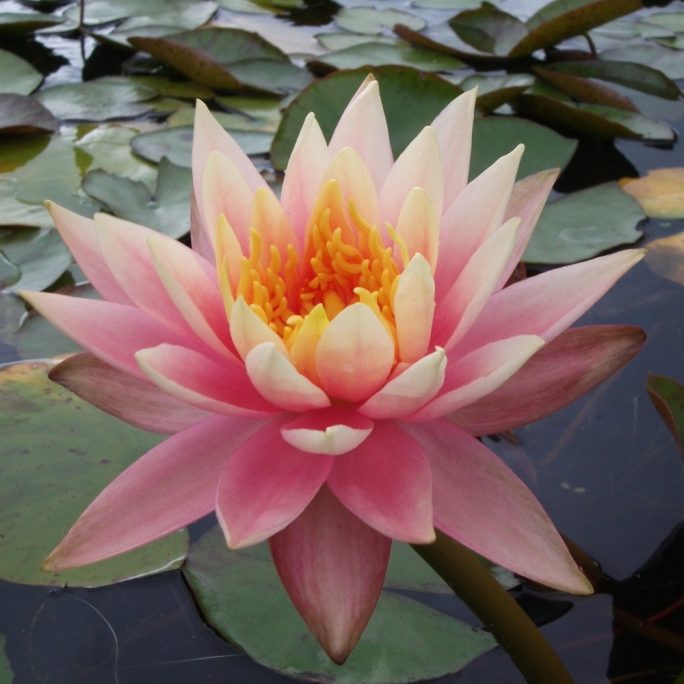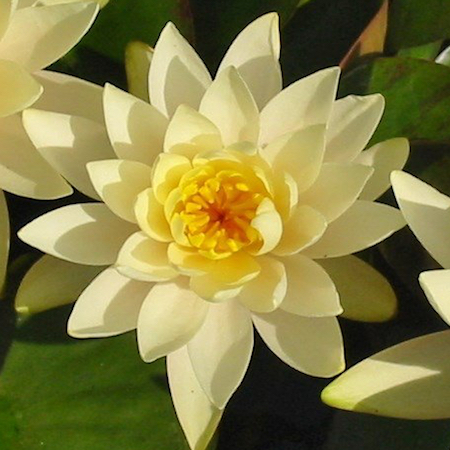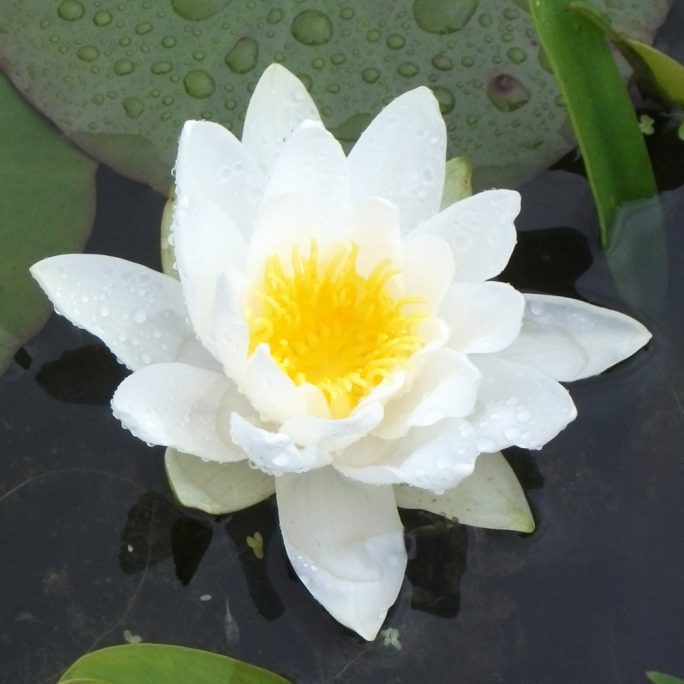Description
Nymphaea ‘ Mayla ‘ Pink Lily
Nymphaea ‘ Mayla ‘ Pink Lily. Wonderful bursts of petals that are fuchsia pink throughout. Flower shape is a like a star and wide open. It has a fragrance that is strong and is very free flowering. We feel that this is an attractive eye catching plant. Lily’s provide surface cover on your pond which helps to control algae. Lily’s are beneficial to aquatic wildlife with the pads providing cover for aquatic animals and resting areas for pollinators.
- Flower size 12.5 – 15 cm ( 5 – 6 inches ) Number of petals 40
- Leaf colour Top leaves are medium green and some leaves are plum coloured. The newer leaves are firstly a deep plum. The underside is reddish – purple with a centre vein from peduncle which is usually light green.
- Leaf size 20 – 25 cm ( 8 -10 inches ) Nearly round, the tips of the lobes are slightly pointed with less overlapping at the sinus
- Leaf spread 1.8 – 2.4 m ( 6 – 8 feet ) when mature
- Recommended for medium ponds.
- Nymphaea ‘ Mayla ‘ known for the fascinating flower and leaf colours. It has large blooms that open wide and sits just on top of the water. This lily is a showstopper for any pond
- Planting depth 30 – 90 cm ( 12 – 35 inches ) from soil level .
- Position in full sun in still calm water
- We would recommend a planting basket of at least 22cm across.
- Because water lilies are heavy feeders consequently they benefit from a slow release fertilizer. Specially prepared for aquatic plants such as Growth Balls which can simply be pushed into the soil.
- We ship all water lilies bare root. This means that we wash the soil off before packing the plants. During the summer months we may need to trim some of the foliage back for shipping.
- Contact us if you require more information. We are available between 08:30am and 16:30pm via telephone Monday to Friday and email outside of these hours we are happy to help with any queries.
- Click here for more information on pond plants

